Range Hood: Why don't my range hood's lights work?
A failed electronic control board, bad user interface control, broken light switch, bad light bulb sockets or a wiring failure can prevent the lights from working.
Unplug the range hood and check the wire harness connections between the light sockets and the control board or light switch. Reconnect any loose wires and repair any broken wires. If the wiring is okay, check the electronic control board for burn marks. Replace the control board if you see burn marks because the burn marks indicate a control board failure.
If your range hood uses a user interface control to control the lights, you may need to replace the user interface if it isn't sending signals to the electronic control board when you press user interface buttons. A user interface control is a keypad and display panel that sends signals to the electronic control board through a ribbon wire cable when you press its selection buttons. DIY testing of the user interface control isn't available for most range hood models. If the electronic control board doesn't activate the lights, you'll likely need to replace the electronic control board. If the lights still don't work after replacing the control board, you'll likely need to replace the user interface control.
If your range hood uses a switch to control the lights, unplug the range hood and test the switch for continuity using a multimeter to see if the switch allows current to flow to the lights when you turn the switch on. Replace the switch if you don't measure continuity through the switch when it's turned on.
With new light bulbs installed and the range hood unplugged, check for continuity through the light sockets with new light bulbs installed. Replace the sockets if you don't measure continuity through the sockets with new bulbs installed.

THESE REPAIRS MAY HELP SOLVE YOUR RANGE HOOD PROBLEM
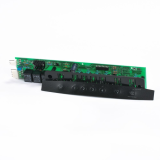
Replace the range hood electronic control board
The electronic control board operates the exhaust fan and cooktop lights in the range hood. If the electronic control board is getting power but won't activate the fan or lights, replace it. The electronic control board also operates the sentry system on models equipped with that feature. Replace the electronic control board if it isn't operating the sentry system correctly.
Range hood electronic control board

How to replace a range hood electronic control board
If your range hood's fan or lights don't work, the electronic control board could be the problem. This step-by-step repair guide shows range hood circuit board replacement.
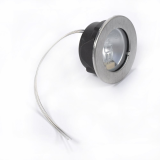
Replace the range hood light bulb socket
The light bulb socket holds the light bulb in place and connects the electrical leads on the bulb to the power supply wiring. If a light won't turn on when activated, first try replacing the bulb. If the new bulb won't turn on, the socket could be defective. Replace the light bulb socket if it's damaged or defective.
Range hood light bulb socket
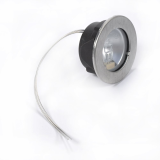
How to replace a range hood light socket
Just changed your range hood light bulb but it still won't come on? The light socket might be to blame. This easy-to-follow repair guides explains how to replace a range hood light socket in just 15 minutes.
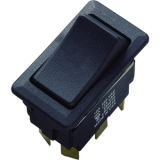
Replace the range hood light switch
In some range hoods, an electro-mechanical light switch controls the lights. The light switch also varies the lighting intensity in models with multiple settings for the lighting system. If the light switch doesn't work properly, replace it.
Range hood light switch
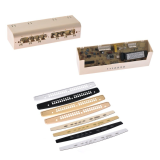
Replace the range hood user interface control
The user interface control sends selection signals to the electronic control board to operate the fan and lights in the range hood. If the electronic control board doesn't receive the selection signals when you press buttons, replace the user interface control.
Range hood user interface control
Most common symptoms to help you fix your range hoods
Choose a symptom to see related range hood repairs.
Main causes: bad fan switch, electronic control board failure, faulty user interface control, wiring failure…
Main causes: bad light bulb, broken light switch, bad electronic control, user interface control failure, bad light sock…
Main causes: sentry feature trips due to high cooktop temperature, bad temperature sensor, electronic control board fail…
Main causes: lack of electrical power, bad electronic control board, faulty user interface, fan and light switch failure…
Main causes: clogged air filters, air duct problems, fan motor failure, broken fan blade…
Main causes: loose mounting screws, bad fan motor, damaged fan blade, worn fan motor bearings…
Main causes: electronic control board failure, bad user interface control, light and fan switch failures, wiring failure…
Most common repair guides to help fix your range hoods
These step-by-step repair guides will help you safely fix what’s broken on your range hood.
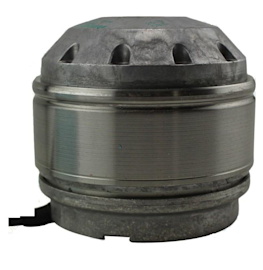
How to replace a range hood fan motor
If the fan on the range hood won’t run, it’s likely that the fan motor has failed. Follow the steps in this guide to rep…

How to replace a range hood fan switch
The fan switch activates the fan motor in the range hood. If the fan switch is defective, replace it using the detailed …
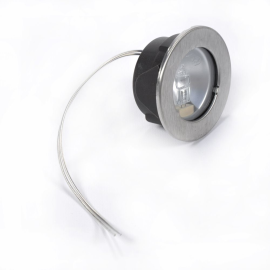
How to replace a range hood light socket
When you replace a light bulb and it still won’t work, the socket is likely defective. Use the detailed steps in this re…
Effective articles & videos to help repair your range hoods
Use the advice and tips in these articles and videos to get the most out of your range hood.
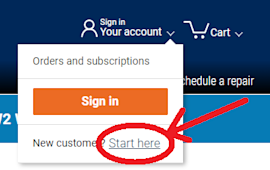
Learn about all the convenient features on our Sears PartsDirect website that make your parts purchases easier.…
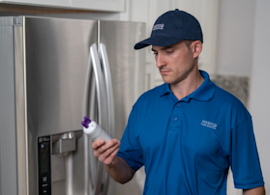
Get answers to frequently asked questions about Sears and Sears PartsDirect.…
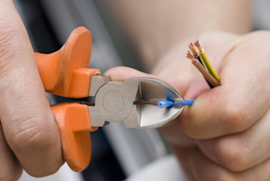
Learn how to repair broken, frayed or damaged wires in your appliances.…